During the early days of 5G, the mobile industry was sometimes caught saying that mobile – with the help of 5G – would kill Wi-Fi. That hasn’t happened, obviously. Usage of public Wi-Fi hotspots would likely decline if more users had mobile data plans that are unlimited in volume. T-Mobile suggested it in this blog post from December 2021.

But even if so, few users would stop using their Wi-Fi at home. Home is where Wi-Fi connects automatically and where a majority of usage takes place.
Ironically, the greatest use case for 5G so far is to substitute fixed broadband. 5G has encouraged many MNOs globally to, for the first time, seriously push fixed wireless access, or FWA, services using their mobile networks. Why is it ironic? The mobile industry has for more than a decade specified and built 5G, the most advanced and best mobile technology so far, but its primary use case to date is fixed. Sitting still.

While FWA could substitute a fixed broadband connection, especially DSL and cable, it does not substitute Wi-Fi, though. The FWA router converts 5G into Wi-Fi. Wi-Fi, not 5G, remains the interface to the connected devices in the home.
So while we, already, are tired of our own headline and the whole notion of “Wi-Fi vs. 5G”, we need to check the facts. After all, we are Tefficient and believers in data.
Continue reading Are fixed and Wi-Fi actually losing ground to mobile?
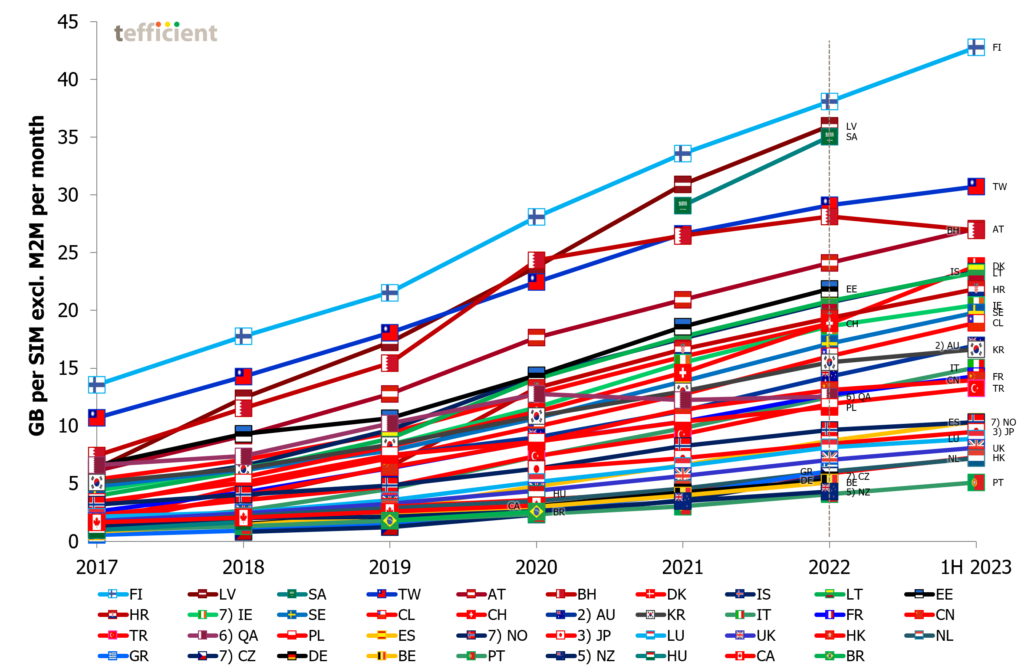
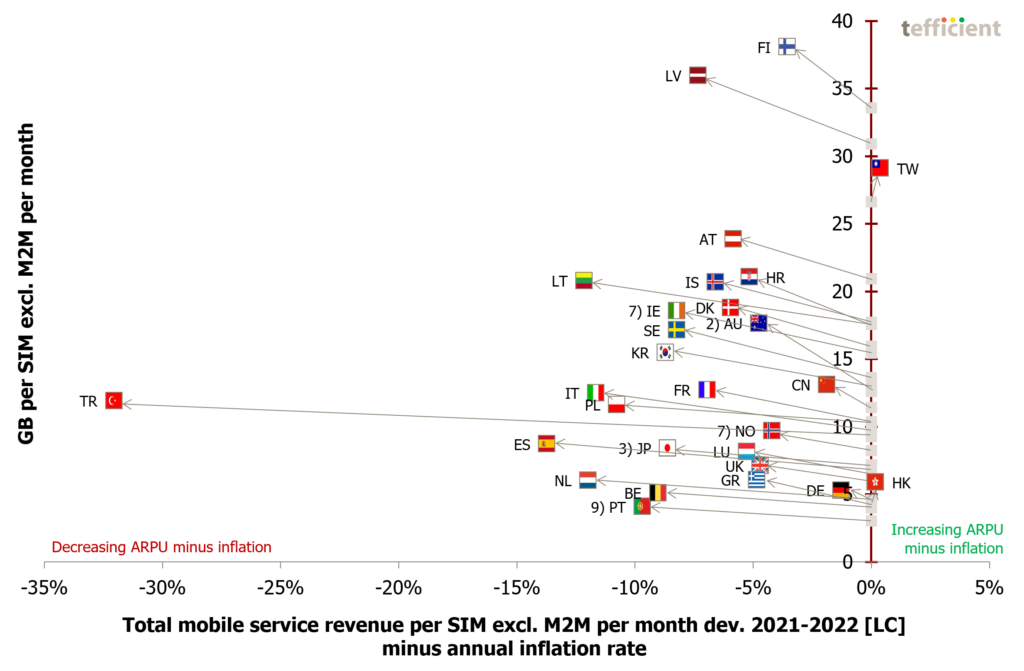
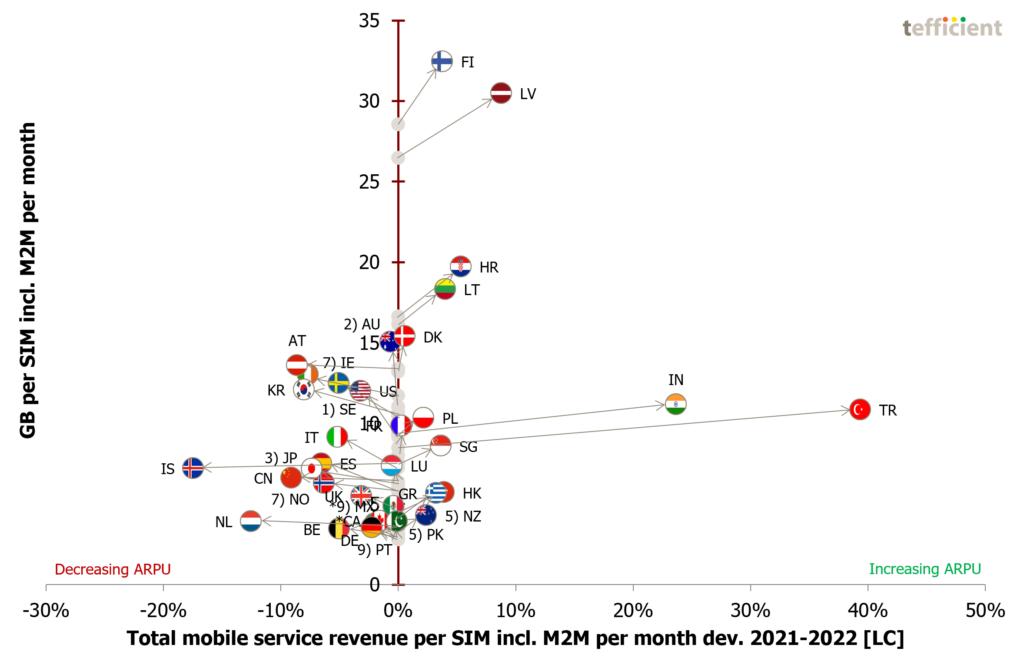

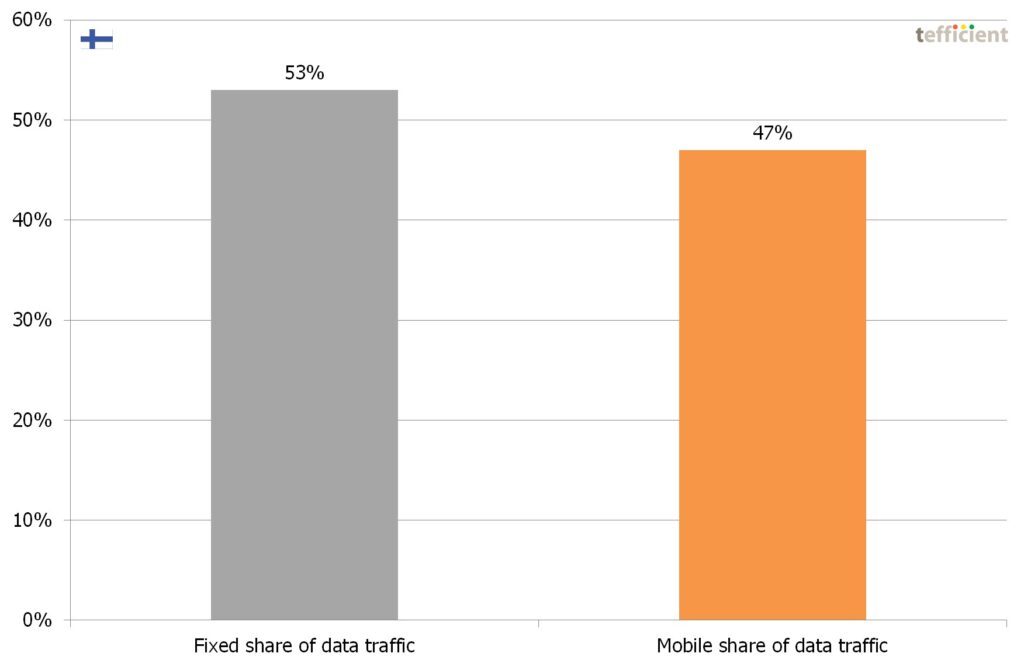


 In this analysis we again use the Christmas tree visualisation to identify the countries where the more-for-more initiatives of operators buck the general more-for-less trend.
In this analysis we again use the Christmas tree visualisation to identify the countries where the more-for-more initiatives of operators buck the general more-for-less trend.
